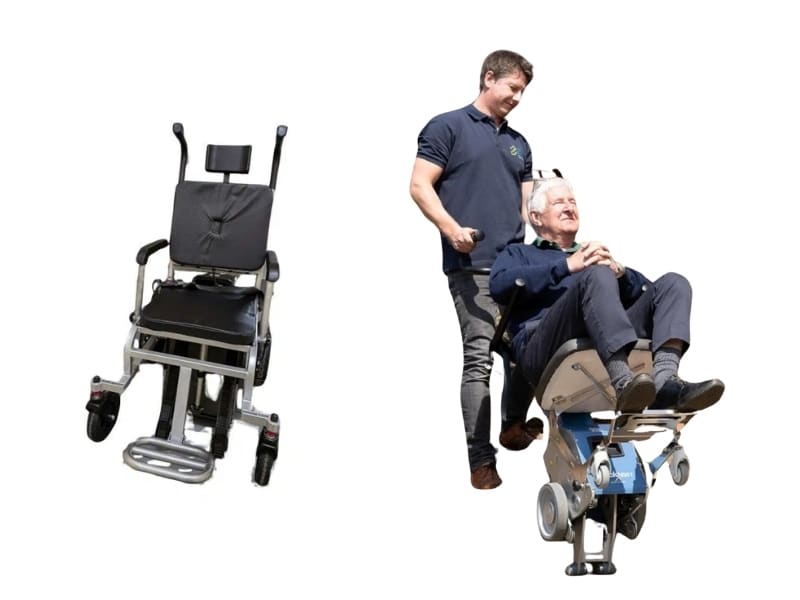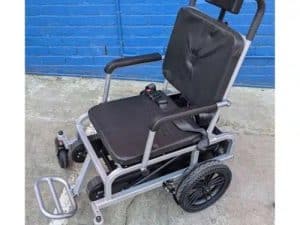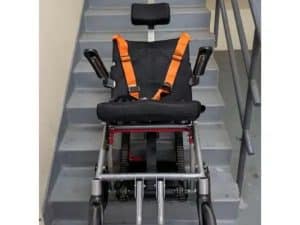Ensuring seniors’ safety when using a stair climber promotes independence and reduces the risk of accidents. Stair climbers for seniors can make a significant difference in improving mobility and quality of life. However, using these devices properly is vital to prevent any mishaps. This article will explore the key aspects of senior safety when using a stair climber and how to ensure a safe experience.
Why is safety crucial for seniors when using a stair climber?
When it comes to seniors, safety is always a top priority, mainly when using equipment like stair climbers. The risk of falling or injury is heightened for older individuals, especially those with mobility issues. Here’s why safety should be the primary focus:
- Physical limitations: Seniors often face decreased strength, balance, and coordination.
- Risk of falls: Stairs are a significant fall hazard, so stair climbers are vital.
- Medical conditions: Some seniors have underlying medical conditions, such as arthritis or osteoporosis, that can make them more susceptible to injury.
- Peace of mind: Knowing that the stair climber is safe boosts the confidence of both the senior and their caregivers.
By prioritising safety, you ensure that seniors can confidently use stair climbers and reduce the risk of accidents.
When should seniors consider using a stair climber?
Stair climbers are an excellent solution for seniors who struggle to move up and down stairs. However, it’s essential to understand when these devices are most beneficial. Here are some situations when seniors should consider using a stair climber:
- Limited mobility: If a senior has difficulty walking or climbing stairs, a stair climber provides an ergonomic way to get up and down.
- Post-surgery recovery: Stair climbers can offer a safer way to navigate stairs after surgeries, particularly on the legs or hips.
- Chronic pain or fatigue: By reducing the strain of climbing stairs, stair climbers can benefit seniors with chronic conditions like arthritis or fibromyalgia.
- Prevention of falls: Using a stair climber can help eliminate the risk of accidents on stairs for seniors prone to falls.
These scenarios highlight how a stair climber can improve mobility and safety, allowing seniors to remain independent in their daily routines.
Is a stair climber suitable for all seniors?
Not all seniors are the same, so assessing individual needs is vital before deciding if a stair climber suits them. Here are some factors to consider:
- Health status: Seniors with severe heart conditions, vertigo, or specific disabilities might not be suitable for stair climbers.
- Physical ability: If a senior lacks sufficient strength to operate the device, they may need assistance. Some stair climbers are powered, but manual ones require more effort.
- Living situation: A stair climber might be ideal for seniors living in homes with multiple flights of stairs. However, it may not be necessary for single-level dwellings.
- Caregiver support: Seniors who need full-time assistance may not need a stair climber if their caregiver can help them navigate stairs manually.
Evaluating a senior’s physical abilities, living situation, and health can help determine if a stair climber is the right choice.
How do stair climbers compare to other mobility aids for seniors?
Stair climbers help those with mobility challenges and are considered one of the most efficient mobility aids for seniors, but how do they compare to other devices? Let’s examine their differences:
Mobility Aid | Strengths | Limitations |
Wheelchairs | Ideal on flat surfaces | Cannot navigate stairs |
Walking frames | Good for balance on flat surfaces | Risky on stairs |
Lift chairs | Helps with sitting/standing | Doesn't address stairs |
Stair lifts | Provides vertical mobility | Requires installation, less portable |
Stair climbers | Safe, portable, effective on stairs | May require effort for steep stairs |
Overall, stair climbers provide more flexibility, especially for seniors living in multi-story homes or buildings, offering a safer and more practical solution than other mobility aids.
What features make stair climbers safer for seniors?
Stair climbers come with various features designed to enhance safety for seniors. Here are some key features that make them safer:
- Ergonomic handles: Stair climbers often come with padded, ergonomic handles to provide a secure grip and reduce strain on the senior’s hands.
- Safety straps: Many stair climbers include safety straps to secure individuals and prevent slips or falls during operation.
- Stability: High-quality stair climbers are designed with a sturdy base and balanced structure to ensure stability during use.
- Powered assistance: Some stair climbers offer motorised aid to reduce the effort required by the senior and provide smoother, more controlled movement.
- Compact design: Stair climbers are often designed to be lightweight and easy to store, ensuring they don’t take up too much space.
These features ensure maximum stability and safety for seniors when using stair climbers, reducing the risk of falls for older people and making them an excellent choice for independent mobility.
Why is senior safety crucial when navigating stairs?
Navigating stairs presents a unique challenge for seniors. This is why ensuring safety while using a stair climber is so essential. Here are some reasons why senior safety on stairs should never be overlooked:
- Physical vulnerability: Seniors are more prone to injury due to weaker muscles and bones, particularly in the event of a fall.
- Impaired balance: As people age, their balance may diminish, making stairs especially risky.
- Limited reaction time: Seniors may not be able to react as quickly to slips or sudden movements, which can result in serious injuries.
- Increased risk of fractures: Falls can lead to fractures, particularly in seniors with osteoporosis or similar conditions.
By ensuring safety when using stair climbers, seniors can enjoy greater independence and avoid the dangers of stairs.
How can you minimise risk while using a stair climber?
While stair climbers are designed to be safe, taking steps to minimise risk is essential. You can enhance mobility with a modern stair climber to further improve safety and convenience. Here are some tips to help reduce the chances of an accident:
- Regular maintenance: Inspect the stair climber regularly for signs of wear or malfunction to ensure it is in good working condition.
- Proper training: Ensure seniors or caregivers are trained to operate the stair climber safely.
- Use appropriate footwear: Seniors should wear non-slip, supportive shoes when using a stair climber.
- Clear the stairway: Remove any obstacles or clutter from the stairs that might interfere with the smooth operation of the stair climber.
- Assist when necessary: If the senior requires assistance, ensure a caregiver can provide support and guidance.
Taking these precautions can significantly reduce the risk of injury and make stair climbers safer for seniors.
Conclusion
Stair climbers are an excellent mobility solution for seniors, offering increased independence and safety when navigating stairs. By prioritising safety, considering the seniors’ needs, and ensuring proper maintenance and training, you can provide a safe and efficient experience for seniors using stair climbers.
Looking for safer ways to help seniors move up and down stairs? Explore how Stair Climbers can make daily life easier.


